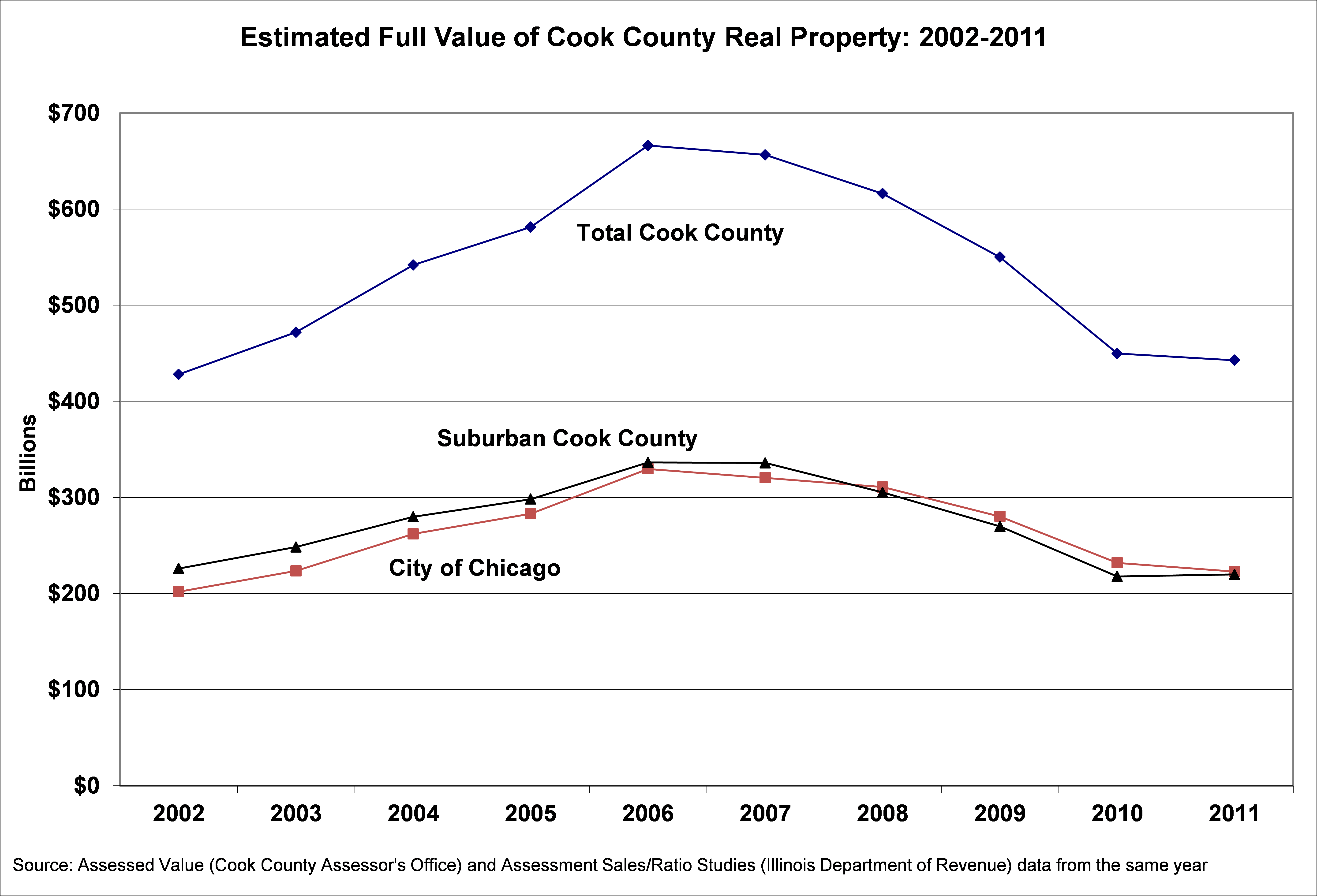January 08, 2014
Last month the Civic Federation released its annual estimate of the full value of real estate in Chicago and the Cook County suburbs. After four straight years of significant drops in estimated value, the rate of decline in the County as a whole slowed in 2011. Tax year 2011 is the most recent year for which data are available.
The 2011 estimate of the full value of property in Cook County was $442.8 billion, a decline of $7.0 billion or 1.6% from the 2010 estimated full value. However, the rate of decline was significantly lower than in previous years. In 2010 the estimated full value declined by 18.2%. The 2011 estimate marks the fifth year in a row of declining full value in Cook County. Prior to 2007, the estimated full value of real estate in the City of Chicago and the suburbs grew every year going back to at least 1995.
The City of Chicago experienced a decline of 3.9% in 2011 from 2010 estimated values. In the southwest suburbs, the estimated full value fell by 0.5% and the value for the northwest suburbs actually increased by 1.9%. The following graph shows the changes in estimated full value between 2002 and 2011.

This estimate is calculated using two data sources: the total assessed value of property as reported by the Cook County Assessor’s Office and the median level of assessment reported by the Illinois Department of Revenue. The estimate does not include railroad properties or properties that are exempt from real estate taxes.
The Illinois Department of Revenue collects data on property sales and calculates the ratio of assessed values to sales values. That data is used to compute the mean assessment-to-sales ratio, or the median level of assessment. The Department of Revenue figures for 2011 were released in 2013.
The Civic Federation estimates the full value of property by dividing the median level of assessment into the total assessed value of each class of property in Cook County. For those classes for which the Department of Revenue does not calculate a median level of assessment, the level set by County ordinance is used.
